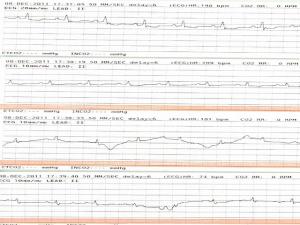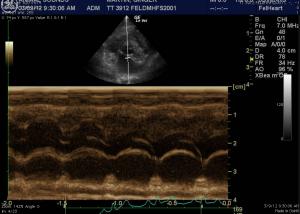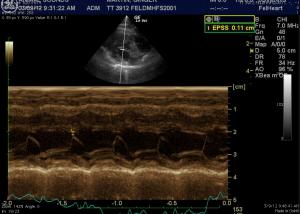The Restrictive Cardiomyopathy Cat, a Saddle Thrombus, & Today’s Cutting Edge Effective Pharmacy.
Yes the kitchen sink of medications were necessary to pull this cardiomyopathy cat through a saddle thrombus. Plavix, pimobendan, ace-inhibitor, atenolol, lasix, heat support and whatever else came to mind….A fortunate 21st century cat and excellent care prevailed thanks to a trio of local intensive care, mobile sonography, and remote cardiology consultation. You have to love where we are in the “Flat” veterinary world of 2012.
Sonogram (Cardiac): Ginger Martin
History: The patient is a feline DMH, SF, 9 year old. The patient has a history of hyperthyroidism, treated with I 131, sudden onset posterior paresis. The physical exam revealed poor femoral pulse quality, knuckling of hind limbs, gallop rhythm, and hypothermia (97.2 F). The patient was able to move the rear paws but could not stand. Bloodwork revealed slight hyperglycemia, moderate anemia, polychromasia and anysicytosis. Thrombocytopenia with clumping was also noted.







Comments